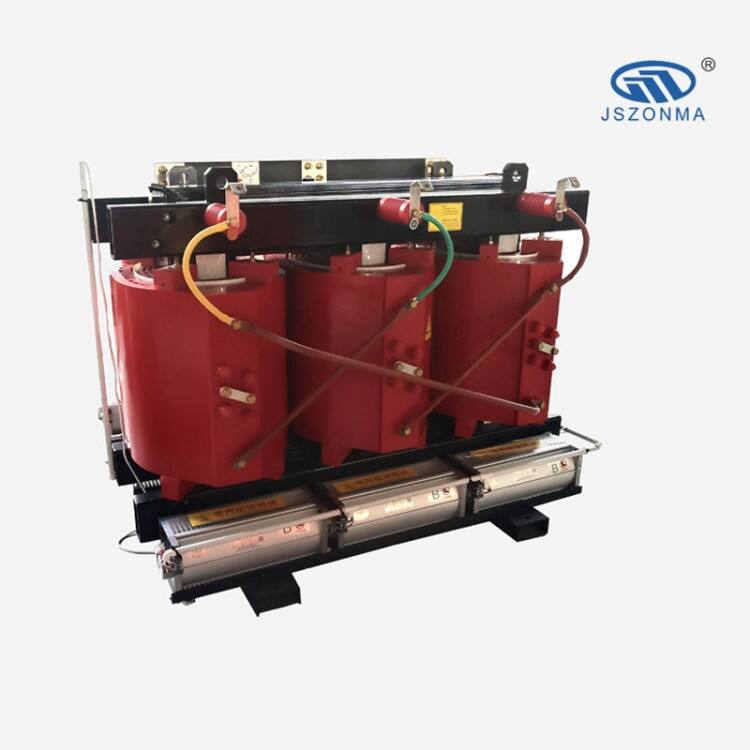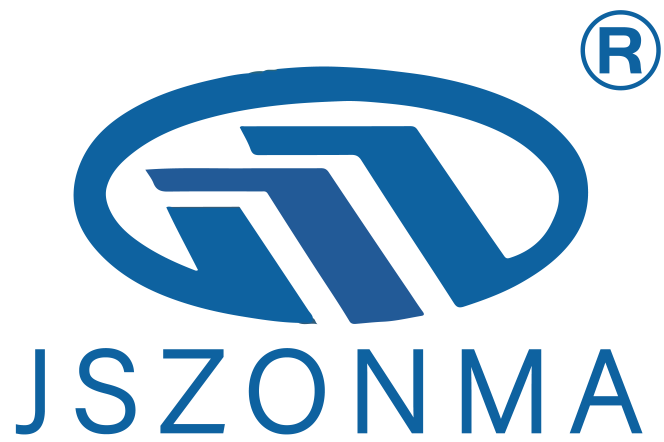When evaluating power distribution equipment for industrial facilities, the choice between dry-type and oil-filled transformers significantly impacts both initial investment and long-term operational costs. Understanding the total cost of ownership becomes crucial as facility managers seek to optimize their electrical infrastructure while maintaining reliable power distribution. The decision extends beyond simple purchase price comparisons, encompassing maintenance requirements, environmental considerations, and operational efficiency factors that influence decades of service life.

Initial Investment Analysis
Purchase Price Considerations
Dry-type transformers typically require higher upfront capital investment compared to their oil-filled counterparts. The manufacturing process involves specialized insulation materials and construction techniques that increase production costs. However, this initial premium often becomes justified through reduced installation expenses and simplified facility requirements. Oil-filled units generally offer lower purchase prices but demand additional infrastructure investments including containment systems, fire suppression equipment, and specialized ventilation.
The price differential between these technologies varies significantly based on voltage ratings and power capacity requirements. For medium-voltage applications, dry-type transformers may cost 20-30% more than equivalent oil-filled units. This gap narrows considerably in higher voltage applications where safety requirements and installation complexity favor dry-type solutions. Understanding these cost dynamics helps procurement teams make informed decisions aligned with project budgets and long-term facility planning.
Installation and Infrastructure Requirements
Installation costs represent a substantial portion of total project expenses, particularly for oil-filled transformer systems. These units require concrete containment structures, oil spill collection systems, and specialized foundation work that adds significant expense to the overall project. Environmental regulations mandate secondary containment equal to 110% of the transformer oil volume, creating substantial civil engineering requirements. Additionally, fire suppression systems and specialized grounding networks increase installation complexity and associated costs.
Dry-type transformers offer simplified installation procedures that reduce project timelines and labor costs. These units can be installed on standard concrete pads without specialized containment requirements, eliminating the need for complex civil engineering work. The absence of flammable liquids simplifies building code compliance and reduces fire protection system requirements. Indoor installations become more feasible with dry-type technology, providing flexibility in facility design and potentially reducing building costs through more efficient space utilization.
Operational Cost Comparison
Energy Efficiency and Losses
Energy efficiency directly impacts operational costs throughout the transformer lifecycle, making loss evaluation critical for total cost analysis. Modern oil transformer designs typically demonstrate slightly higher efficiency ratings compared to dry-type units, particularly in larger capacity applications. The superior heat dissipation properties of transformer oil enable more compact magnetic core designs that reduce core losses and improve overall efficiency. This efficiency advantage translates to lower energy costs over the transformer operating life.
However, the efficiency gap between technologies continues to narrow as dry-type transformer designs incorporate advanced materials and manufacturing techniques. High-grade silicon steel cores and optimized winding configurations help dry-type units achieve efficiency levels approaching oil-filled transformer performance. For many applications, the efficiency difference becomes negligible when considering the total facility energy consumption, making other cost factors more significant in the decision-making process.
Cooling System Requirements
Cooling system costs represent ongoing operational expenses that vary significantly between transformer technologies. Oil-filled transformers often require forced air cooling systems with fans and pumps that consume additional electrical energy. These auxiliary cooling systems add complexity to the installation and create additional maintenance requirements. The cooling equipment itself requires periodic replacement, typically every 10-15 years, adding to lifecycle costs.
Dry-type transformers rely primarily on natural air convection for cooling, eliminating the need for auxiliary cooling equipment in many applications. This simplicity reduces energy consumption and eliminates cooling system maintenance requirements. However, larger dry-type units may require forced air cooling to maintain acceptable operating temperatures, particularly in high ambient temperature environments. The cooling system selection impacts both energy costs and maintenance scheduling throughout the transformer operating life.
Maintenance and Service Costs
Routine Maintenance Requirements
Maintenance costs constitute a significant portion of transformer lifecycle expenses, with oil-filled units typically requiring more intensive service programs. Regular oil testing, filtering, and replacement create ongoing expenses that accumulate over decades of operation. Oil quality monitoring requires specialized laboratory testing to assess moisture content, dissolved gas analysis, and dielectric strength. These testing programs typically cost several thousand dollars annually for medium-voltage transformers and increase with unit size and criticality.
Dry-type transformers eliminate oil-related maintenance requirements, reducing routine service costs significantly. Visual inspections, connection tightening, and cleaning represent the primary maintenance activities for dry-type units. These tasks can often be performed by facility maintenance staff without specialized training or equipment. The simplified maintenance requirements reduce both direct costs and facility downtime associated with transformer servicing.
Unexpected Repair and Replacement Costs
Failure modes and associated repair costs differ substantially between transformer technologies, impacting long-term cost projections. Oil transformer failures often involve oil contamination, gasket deterioration, or cooling system malfunctions that require specialized repair services. Oil spills create environmental remediation costs that can exceed the transformer replacement value in severe cases. The complexity of oil-filled transformer repairs typically requires manufacturer service technicians, increasing both service costs and repair timelines.
Dry-type transformer failures generally involve insulation breakdown or connection failures that are more straightforward to diagnose and repair. The absence of oil eliminates contamination risks and environmental cleanup costs. However, insulation system repairs in dry-type transformers can be more challenging due to the solid insulation materials used. Replacement parts availability and repair complexity influence the total cost of ownership calculations for both technologies.
Environmental and Regulatory Compliance
Environmental Impact Costs
Environmental regulations create ongoing compliance costs that favor dry-type transformer installations in many applications. Oil-filled transformers require regular environmental monitoring, spill prevention planning, and emergency response procedures that add administrative costs to facility operations. Environmental insurance premiums often increase for facilities with oil-filled electrical equipment due to potential contamination risks. These regulatory compliance costs continue throughout the transformer operating life and may increase as environmental regulations become more stringent.
Dry-type transformers eliminate most environmental compliance costs associated with oil handling and storage. The absence of flammable liquids simplifies facility permitting and reduces environmental insurance requirements. Indoor installation capabilities provide additional environmental protection and reduce regulatory oversight requirements. These factors contribute to lower administrative costs and reduced regulatory compliance burden over the transformer lifecycle.
End-of-Life Disposal Considerations
Disposal costs at the end of transformer life represent significant expenses that vary dramatically between technologies. Oil transformer disposal requires proper oil handling, steel recycling, and potentially hazardous waste management depending on the oil condition and age. Older transformers may contain PCB-contaminated oil that requires specialized disposal procedures costing tens of thousands of dollars. Even modern mineral oil requires proper recycling or disposal procedures that add to end-of-life costs.
Dry-type transformers offer simpler disposal procedures with primarily steel and copper materials that have established recycling markets. The absence of liquid insulation eliminates hazardous waste concerns and reduces disposal complexity. Recycling value for dry-type transformer materials often offsets disposal costs, potentially creating positive salvage value at end-of-life. This factor contributes favorably to total lifecycle cost calculations for dry-type transformer installations.
Risk Assessment and Insurance Implications
Fire Risk and Insurance Costs
Fire risk assessment significantly influences insurance premiums and potential loss exposure for different transformer technologies. Oil-filled transformers contain substantial quantities of flammable liquid that create fire hazards requiring specialized suppression systems and emergency response procedures. Insurance companies typically assess higher premiums for facilities with oil-filled electrical equipment due to increased fire risk and potential business interruption costs. These premium increases continue throughout the policy period and may escalate based on claims experience.
Dry-type transformers eliminate flammable liquid fire risks, often resulting in reduced insurance premiums and improved facility risk profiles. The solid insulation materials used in dry-type transformers are inherently flame-resistant and self-extinguishing, reducing fire propagation risks. Many insurance companies offer premium discounts for facilities that specify dry-type transformers in critical applications. These insurance savings accumulate over the transformer operating life and contribute to favorable lifecycle cost comparisons.
Business Continuity and Downtime Costs
Business interruption costs associated with transformer failures can exceed equipment replacement costs in critical applications. Oil transformer failures often require extended repair periods due to oil cleanup, environmental assessment, and specialized repair procedures. The complexity of oil-filled transformer systems creates longer restoration timelines that increase business interruption exposure. Emergency replacement procedures for oil-filled transformers require specialized equipment and installation procedures that may not be readily available.
Dry-type transformers typically offer faster repair and replacement procedures that minimize business interruption costs. The simplified design and reduced environmental concerns enable quicker restoration of service following failures. Emergency replacement units can be installed more rapidly due to simplified installation requirements and reduced regulatory oversight. These factors contribute to lower business continuity risks and reduced potential loss exposure for facilities using dry-type transformer technology.
Long-Term Performance and Reliability
Expected Service Life Analysis
Service life expectations influence lifecycle cost calculations through equipment replacement frequency and associated capital costs. Oil-filled transformers typically demonstrate excellent longevity when properly maintained, with service lives often exceeding 30-40 years in appropriate applications. The liquid insulation system provides superior heat dissipation and electrical insulation properties that support long-term reliability. However, this longevity depends on consistent maintenance programs and proper oil management throughout the operating period.
Dry-type transformers generally achieve 20-30 year service lives with proper application and maintenance. The solid insulation system eliminates oil degradation concerns but may be more sensitive to environmental conditions and electrical stress. Modern dry-type transformer designs incorporate improved insulation materials and manufacturing techniques that enhance reliability and extend service life. The simplified maintenance requirements often result in more consistent equipment care that supports reliable long-term operation.
Performance Degradation Patterns
Performance degradation patterns differ between transformer technologies and influence lifecycle cost projections. Oil transformer performance typically remains stable for extended periods with gradual oil degradation requiring periodic maintenance attention. Sudden failures are relatively uncommon with proper maintenance, but oil contamination or cooling system failures can cause rapid performance deterioration. The gradual nature of oil transformer aging allows for planned replacement scheduling that minimizes operational disruption.
Dry-type transformer aging typically follows more predictable patterns with insulation system deterioration occurring gradually over time. Temperature cycling and electrical stress contribute to insulation aging that can be monitored through routine testing procedures. The solid insulation system provides clear failure indicators that enable proactive maintenance planning. This predictability supports more accurate lifecycle cost forecasting and replacement planning for facility management teams.
FAQ
What factors most significantly impact transformer lifecycle costs?
Energy efficiency represents the most significant cost factor over transformer lifetime, typically accounting for 70-80% of total ownership costs. Maintenance requirements, installation complexity, and regulatory compliance costs also substantially influence lifecycle economics. The specific application environment, criticality level, and facility infrastructure capabilities determine which cost factors carry the greatest weight in the decision-making process.
How do environmental regulations affect transformer selection?
Environmental regulations increasingly favor dry-type transformer installations through reduced permitting requirements, simplified compliance procedures, and lower regulatory oversight costs. Oil transformer installations face stricter containment requirements, environmental monitoring obligations, and potential cleanup liability that add ongoing operational costs. Future regulatory trends suggest continued movement toward environmentally preferred technologies that minimize contamination risks.
Can dry-type transformers replace oil-filled units in all applications?
Dry-type transformers can replace oil-filled units in most medium-voltage applications, particularly those requiring indoor installation or enhanced safety features. However, very high voltage applications or extreme environmental conditions may still favor oil-filled transformer technology due to superior insulation properties and heat dissipation capabilities. Application-specific analysis considering voltage levels, capacity requirements, and environmental conditions determines the optimal technology selection.
What maintenance cost differences should facilities expect?
Facilities typically experience 40-60% lower maintenance costs with dry-type transformers compared to oil-filled units due to eliminated oil testing, filtering, and replacement requirements. However, dry-type transformers may require more frequent cleaning and inspection procedures, particularly in dusty or contaminated environments. The overall maintenance cost advantage favors dry-type technology for most applications, with the greatest savings realized in facilities with limited maintenance capabilities or environmental restrictions.

